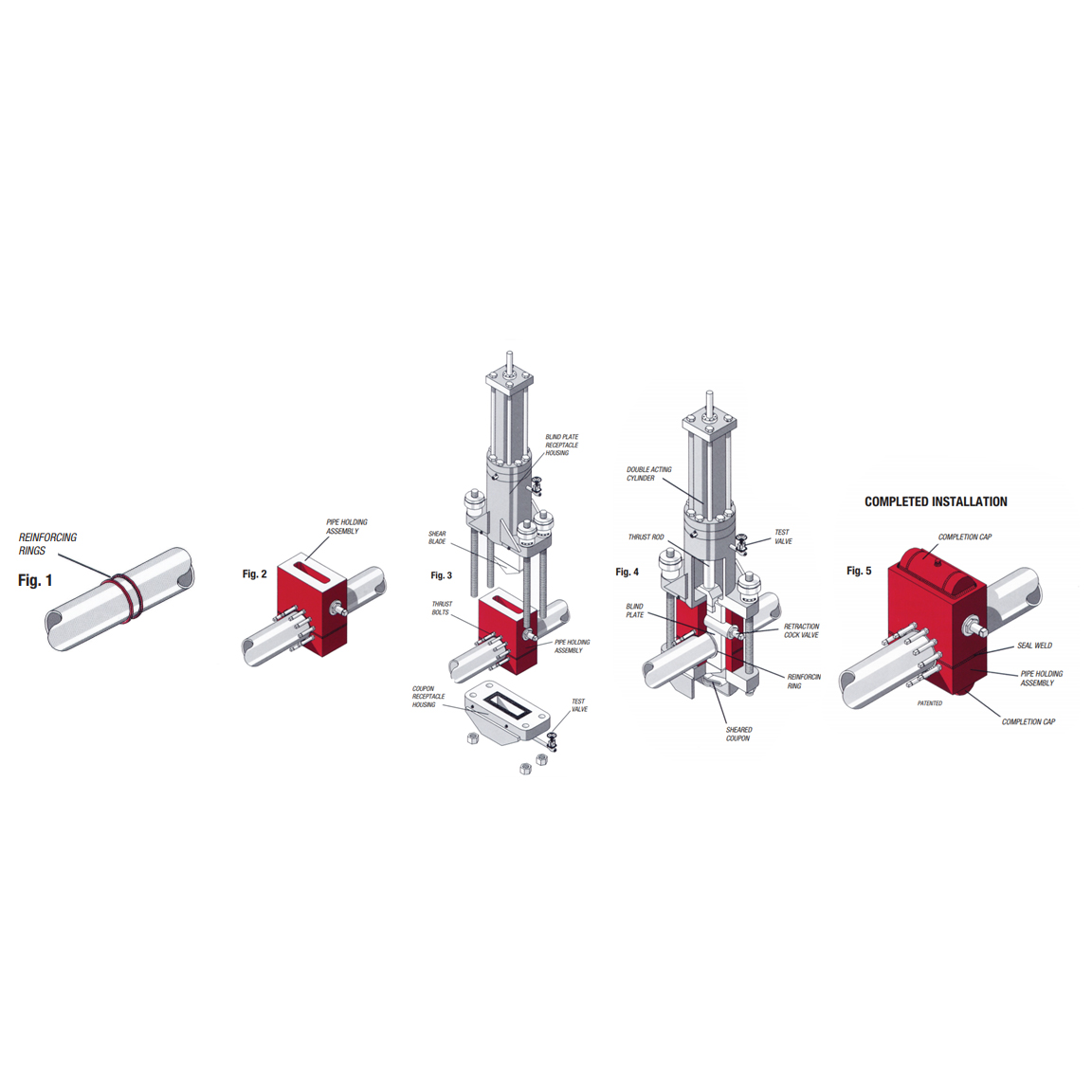The PLIDCO® Shear + Plug – the most RELIABLE method for isolating your pipeline system for repair or maintenance
The PLIDCO® Shear+Plug offers a safe and reliable way to isolate a system for repairs or valve insertion.
Until now, such projects required shutdown of the plant or an entire system unless an operative valve could be used.
There has been no safe, positive plug-off technique because existing seals could not withstand high-pressure and high temperature.
The PLIDCO® Shear+Plug solves the problem by providing positive metal-to-metal contact with a channel to hold injected sealant.
The Shear+Plug is available in pipe sizes .75” through 16” and are designed using ASME Section VIII, Division 1.
Systems for handling higher pressures, higher temperatures and larger sizes can be specially designed and manufactured and will be quoted on request.
A double-acting hydraulic cylinder accomplishes the shear through and positions the blind plate. No shell cutter is used to enter the pipe.
The coupon is pushed into a receptacle housing for easy, complete retrieval.
Installation Steps
- Pipe is ultrasonically tested.
- Pipe reinforcing rings are positioned on the pipe, straddling the area to be plugged, and welded in place (Fig.1).
- The pipe holding section is placed in position on the pipe and secured by welding (fig.2) on any pipe axis.
- Pipe notching equipment is positioned on the pipe holding assembly. Notching can be safely accomplished because axial loads on pipe are transferred through the pipe holding assembly.
- Assembly of the PLIDCO® Shear+Plug is completed by positioning the blind plate housing on the pipe holding section (Fig. 3). Nuts on the through-bolts are securely tightened and the complete assembly is pressure tested.
- The hydraulic cylinder is actuated, thrusting the shear blade through the pipe and pushing the coupon into the coupon receptacle housing, allowing retrieval of the entire coupon (Fig.4).
- The blind plate is indexed. Thrust bolts on the downstream side are tightened, which push the blind plate against the housing wall forming a metal-to-metal seal. The test valve is opened to release downstream pressure and make sure the plug-off is complete.
- While scheduled work is in progress, the coupon receptacle housing is removed – permitting retrieval of the coupon. The first completion cap is welded to the pipe holding assembly. Then the Shear + Plug is reassembled, with the first completion cap in position between the coupon receptacle housing and the pipe holding section.
- Upon completion of the scheduled work, the pipeline is put back on stream. Thrust bolts are loosened; the blind plate is retracted into its receptacle housing.
- After the blind plate is retracted, the retraction cock valve is closed. The Shear + Plug is then disassembled and the second completion cap is welded to the pipe holding assembly (Fig. 5). The pipe holding section remains on the pipe.
Contact Us For More Information | Learn more on-line | Sign up for a MY RICE Account | Watch the Video




